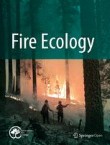Fire Ecology is the official journal of the Association for Fire Ecology.
Taking the next step in wildfire education: integrating multiple knowledge forms into co-produced high school fire science curricula
The wildfire issue in the western United States presents a complex challenge that impacts both society and the environment. Implementing K-12 education programs focused on wildfire can play a significant role ...


